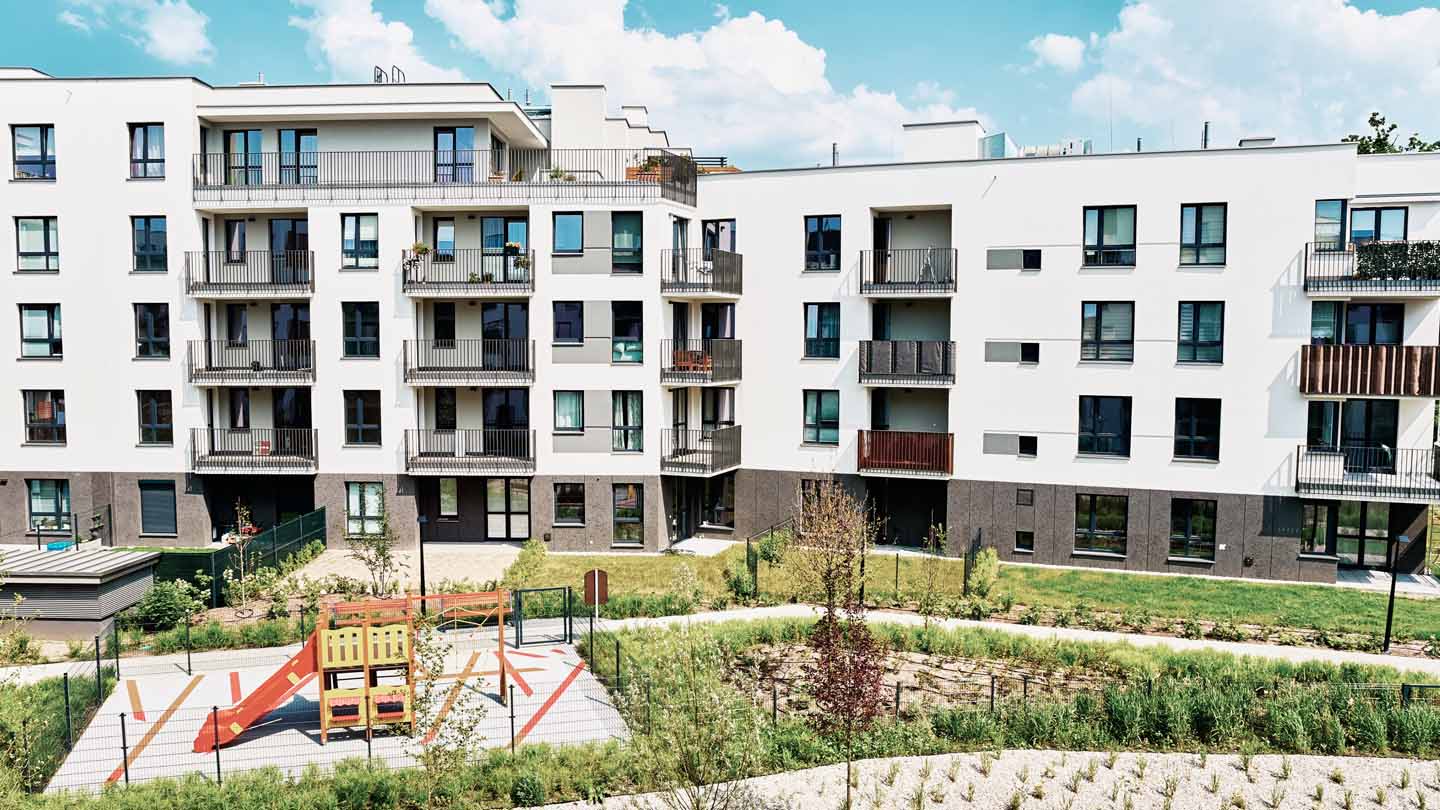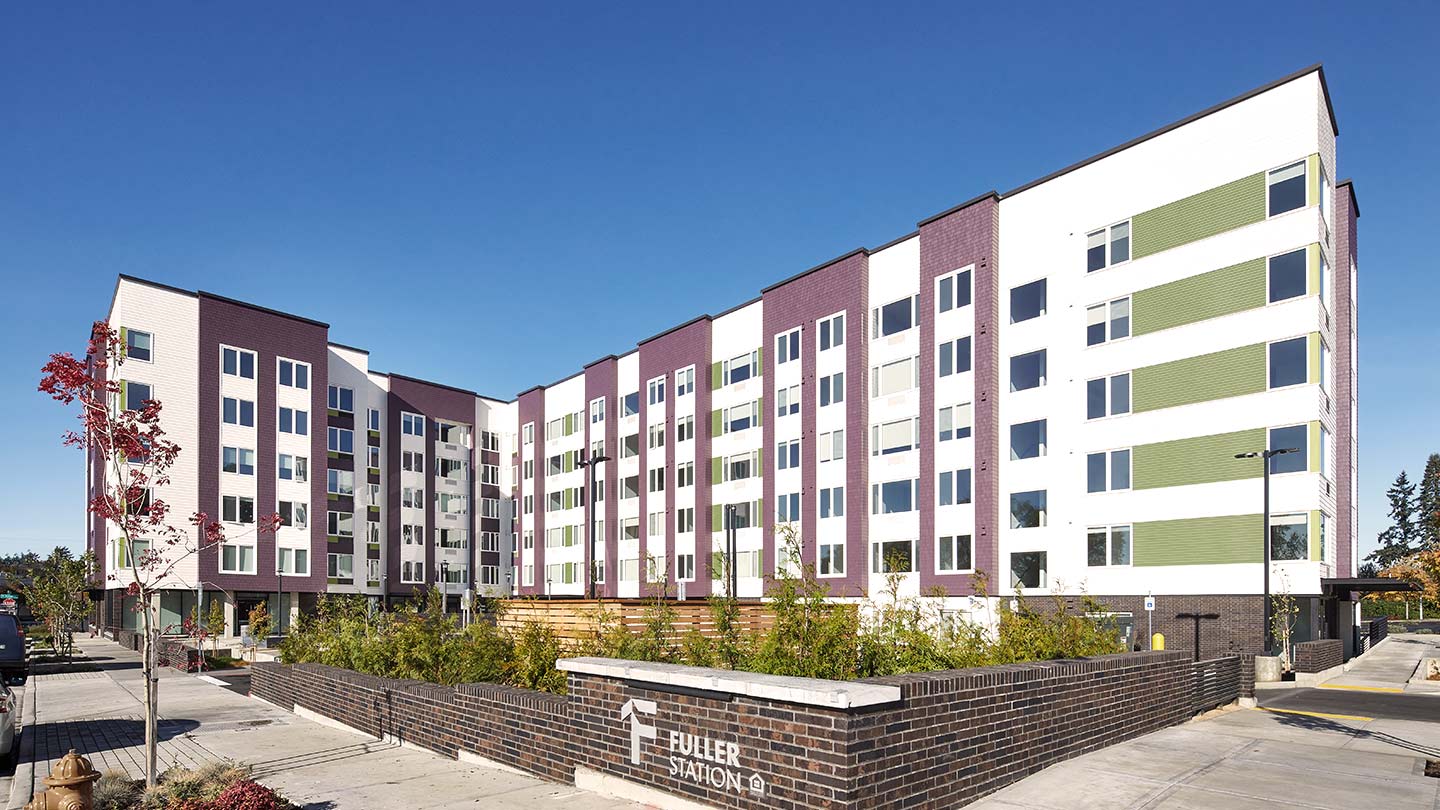
4 min read
Half of all U.S. renter households spent more than 30% of their income on rent in 2022, according to the Harvard Joint Center for Housing Studies. In many markets, families are spending the majority of their income on housing costs, leaving limited resources for other needs. When cost burdens are that widespread, low-income renters aren’t the only ones struggling to find an affordable place to live.
Traditionally, there have been few sources of financing for developing workforce housing, or housing with rents attainable for households that don’t qualify for traditional affordable housing, but are not able to afford market rents. Think of entry level employees, firefighters and city employees.
“Workforce housing is an essential tool to increase the supply of housing that is attainable for families of all incomes. Our role is to bring new ideas and resources that can expand housing opportunities between what’s available and what’s needed,” said Lionel Lynch, Head of Community Development Banking Workforce Housing Solutions at JPMorganChase.
Our team can help you find the right financial solutions for your next workforce housing development.
Workforce housing vs. affordable housing
Programs supporting housing designed to remain affordable typically focus on lower-income families and come with strict income limits.
The Low-Income Housing Tax Credit (LIHTC) program, for instance, helps create and preserve affordable housing with tax credits developers can either claim or use to attract capital from tax credit investors. The affordable units are typically limited to residents earning 60% or less of the Area Median Income (AMI).
While there’s a critical need for extremely affordable units, in many cities, the gap between rents at income-restricted apartments and those without restrictions is significant, Lynch said.
“That leaves out the vast group of middle-income individuals—people like nurses and teachers—who are still in dire need of housing that’s affordable and located close to their jobs,” he said.
22.4M
renter households spent more than 30% of their income on rent in 2022
12.1M
renter households spent more than 50% of their income on rent in 2022
Source: Harvard Joint Center for Housing Studies, America’s Rental Housing 2024 report
Innovative workforce housing solutions
Workforce Housing Solutions provides financing and expertise that can help developers bring workforce housing projects together with additional sources beyond traditional affordable housing subsidies.
Take mission-driven developer Thrive Living’s apartment complex in downtown Los Angeles’ Chinatown. A $68.5 million Workforce Housing Solutions loan helped Thrive Living transform a former food processing facility into a 376-unit apartment building without using LIHTC or other scarce public subsidies. All units are designed for households earning up to 80% AMI.
“We’re taking our expertise in financing both market-rate and affordable housing and innovating to fill the gap,” Lynch said.
Flexible lending
The Workforce Housing Solutions team provides construction, rehabilitation and permanent loans to developers committed to keeping rents affordable to low- and middle-income households. At least half of a project’s units must be at least 15% below market rents. For instance, if the typical monthly rent for a two-bedroom apartment is $3,500, a developer with a Workforce Housing Solutions loan would charge at most $2,975.
“Focusing on the discount to market rents give us flexibility to support a wider range of projects offering affordability, particularly in cities with a high cost of living,” Lynch said.
Workforce Housing Solutions also finances projects with a mix of rent-restricted workforce housing and market-rate units, which is one way to make developing workforce housing feasible.
Forging connections
Creating workforce housing takes land and capital.
“We can help developers connect the dots to institutions that are interested in workforce and affordable housing that have resources they could deploy to make projects feasible,” Lynch said. “There are opportunities to create housing in ways that benefit both the institution and the community.”
Community Development Banking has deep expertise with public sector agencies and Community Development Financial Institutions that often play a role in affordable and workforce housing development, as well as other potential sources of capital and land. Those can include:
- Healthcare systems, higher education and other major employers: Frequently, hospital systems and universities are among the largest employers in their communities and own large amounts of land. Using that land to develop attainable housing can help employees and the broader community have access to affordable places to live—like when Universal Destinations & Experiences donated 20 acres to a project creating 1,000 affordable and workforce housing units in Orlando.
- Impact equity funds: Development and preservation of workforce housing is a primary goal for many impact funds. These funds have access to a wide range of investors, including private corporations, foundations, individuals and civic coalitions.
- Pension funds: The financial returns on attainable housing projects can be consistent with the returns pension funds seek in segments of their investment portfolio. A Federal Reserve Bank of New York report on seven pension funds that committed capital to multifamily affordable and workforce housing found that motivations for investing included diversification, strong demand for affordable units, performance through various economic cycles and, in some cases, alignment with social goals.
JPMorgan Chase Bank, N.A. Member FDIC. Visit jpmorgan.com/commercial-banking/legal-disclaimer for disclosures and disclaimers related to this content.







